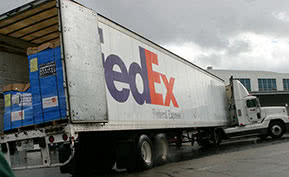SMB Group’s 2013 Top 10 SMB Technology Market Predictions

Here are the SMB Group’s Top 10 SMB Technology Predictions for 2013! A more detailed description of each follows below:
- Progressive SMBs Sprint Ahead of Peers
- SMBs Prepare to Optimize for Mobile Computing
- Social Gets Serious
- Integration Becomes a Top Priority for Medium Businesses
- Information Overflow Drives Demand for Infrastructure and Data Protection Solutions
- The Channel Transforms for a New Technology Landscape
- Cloud Cover Expands
- The Big Gap in Big Data Grows for Small Businesses
- SMB Interest and Involvement in Big Company Supplier Networks Dials Up
- Successful SMB Vendors Sharpen the Segmentation Lens
(Use this link for a .pdf version: Top 10 SMB Technology Predictions for 2013)
2013 Top 10 SMB Technology Market Predictions in Detail
- Progressive SMBs Sprint Ahead of Peers. Last year we identified a distinct correlation between SMB investments in technology and their business performance. Progressive SMBs are more growth driven, invest more in technology and use technology for competitive advantage. They are also much more likely to anticipate revenue gains than peers whose tech investments are flat or declining—and the gap is widening. In 2011, 81 percent of SMBs that planned to spend more on technology forecast revenue growth for 2012, while only 45 percent of SMBs with flat IT budgets, and just 34 percent of those with decreased IT budgets expected their businesses to grow. Now, in our recently completed 2012 SMB Routes to Market Study, we see that 85 percent of SMBs that plan to invest more in technology anticipate revenue increases; only 42 percent of those planning to decrease IT spending expect revenues to rise, and 38 percent that planning for flat IT investments are anticipating growth. We expect this gap to continue to grow as more SMBs make the technology-business performance connection and see business benefit from it.
- SMBs Prepare to Optimize for Mobile Computing. Comparison of our 2010 and 2012 SMB Mobile Solutions studies shows SMB adoption of mobile solutions soaring over the past couple of years. SMB use of mobile business apps for employees rose from 17.5 percent to 21 percent from late 2010 to 2012, adoption of mobile-friendly websites ticked up from 18 percent to 34.5 percent, and mobile commerce adoption increased by 5 percent. But most SMBs haven’t yet figured out how to manage the explosion of devices, apps and the “bring your own device” (BYOD) phenomena. As mobile expenses skyrocket and business reliance on mobile increases, SMBs will become more strategic about their mobile investments. They will increasingly focus on mobile management and security, and on integrating mobile apps more effectively with other business workflows and applications. Vendors that can supply easy to deploy, cost-effective mobile device management, platforms and solutions to help them more efficiently manage and derive value from mobile will have a receptive audience.
- Social Gets Serious. The percentage of SMBs that use social in their businesses has jumped over the past year, from 53 percent in 2011 to 58 percent in 2012. But, our 2012 SMB Social Business Study reveals that only 28 percent of SMBs are using social strategically; the majority take an informal, ad-hoc approach. In the early going, simply using social media—however experimentally—has been a way to differentiate. But the social bar is rising. To ensure that their increasingly time-intensive investment in social pays off, more SMBs will want to develop plans to map their social efforts to specific business objectives and outcomes. But vendors will need to step up to help enable this, providing solutions and services that make it easier to coordinate, manage and integrate social activities in a more time-effective and cost-efficient way.
- Integration Becomes a Top Priority for Medium Businesses. A funny thing happened on the way to the cloud: integration has become a top priority for medium businesses. In fact, integration has moved up from #4 in 2011 to the #1 technology challenge in our 2012 SMB Routes to Market Study. Smaller businesses will need to reach a certain threshold of volume, pain and problems before they push integration higher up on the list, but medium businesses are grappling with integrating legacy on-premises apps with newer cloud apps, and integrating cloud apps with each other. At the same time, they are becoming painfully aware of the productivity drain, errors and lack of visibility those results from applications that “don’t talk to each other.” Although integration isn’t as sexy as social or mobile, integration medium businesses will invest to achieve productivity, time savings, error reduction and decision-making benefits that integration enables. However, a complex, generic integration approach won’t cut it for small or medium businesses—they will look for pragmatic solutions that meet functional and industry-specific workflow integration needs, and simultaneously help address data quality requirements.
- Information Overflow Drives Demand for Infrastructure and Data Protection Solutions. The mobile-social-cloud triumvirate is generating unprecedented amounts of data. In turn, businesses must protect this data from criminals, natural disaster, and just plain old human error. In our 2012 SMB Routes to Market Study, respondents rated “securing and protecting my company information from threats” as a top technology concern. As regulatory pressure and consumer scrutiny to safeguard data intensifies, SMBs investments for data backup, security, server virtualization and desktop virtualization solutions will rise. 55 percent, 50 percent, 34 percent and 36 percent of SMBs, respectively, plan to purchase and/or upgrade solutions in these areas in 2013.
- The Channel Transforms for a New Technology Landscape. The complexities of cloud, social and mobile technologies are transforming the IT landscape and the role of the channel. Today, SMBs are looking for more than products from the channel–they need partners that can both guide them and deliver round the clock service and support for a spectrum of areas–from virtualization to security to data protection to business applications. Our 2012 SMB Routes to Market Study indicates that SMBs want partners that understand their business, can recommend solutions, and provide cost-effective solutions. But they also demand technical competence, remote and on-site service and support, customization capabilities and 365x7x24 coverage from channel partners. To meet these elevated customer expectations, VARs and other traditional channel partners will need to invest in the infrastructure, expertise and processes necessary to transform their businesses to become managed service providers (MSPs). They will also need to participate in ecosystems that enable them to partner as necessary to fill in gaps in their own portfolio to provide their customers with more complete solutions.
- Cloud Cover Expands. Last year, we predicted that the cloud would be become the “new normal” for SMBs, who need to harness technology solutions for the business, but often lack the skills and staff for do-it-yourself IT. Indeed, our 2012 SMB Routes to Market Study shows that about 52 percent of SMBs are using cloud solutions in their businesses. The value proposition for cloud computing—reduced capital costs, speed to deploy, and real-time collaboration and visibility—are become more compelling, and adoption shows no signs of abating. For the first time, we see plans for cloud overtaking plans for on-premises implementation in selected solutions areas, such as marketing automation. Demand for anytime, anywhere, any-device mobile access to applications, and more options for SMB-oriented server and desktop virtualization offerings, and infrastructure-as-a-service (IaaS) and platform-as-a-service (PaaS) solutions will continue to accelerate this trend.
- The Big Gap in Big Data Grows for Small Businesses. The data fire hose is at full blast and shows little signs of abating. Meanwhile, there’s no question that companies that figure out how to harness and turn data into insights most effectively will gain huge competitive advantages. Our 2012 SMB Routes to Market Study shows that medium businesses are taking the steps needed to turn the information fire hose into actionable business insights, with 57 percent of medium businesses having purchased/upgraded a business intelligence/analytics solution in the past 24 months, and 49 percent planning to do so in the next 12 months. However, small businesses are hard-pressed to follow suit: just 18 percent of small businesses have purchased/upgraded a business intelligence/analytics solution in the past 24 months, and only 17 percent plan to do so in the next 12 months. To make big data relevant for small businesses, BI and analytics vendors will need to up education regarding relevant use cases and key performance indicators, and provide streamlined tools that integrate easily with the business applications small businesses already use.
- SMB Interest and Involvement in Big Company Supplier Networks Dials Up. Attracting new customers, growing revenues, and increasing profitability are perennial SMB challenges. SMBs are always looking for ways to grow the business, and many B2B SMBs covet the opportunity to get their share of the $300 billion dollars that large businesses spend annually on goods and services. Recognizing that SMBs are the engines of economic growth, large businesses are developing new pathways for SMBs to compete for this business. For instance, IBM and 15 other large companies have created Supplier Connection, a free portal where SMBs can register their companies to gain visibility and consideration from procurement communities of large corporations. And, as a by-product of SAP’s Ariba acquisition, every SAP customer (including almost 35,000 Business One customers, who are predominately small businesses with fewer than 100 employees) gets a free connection into the Ariba network. Over time, these networks may also help SMBs with global aspirations start doing business in new regions.
- Successful SMB Vendors Sharpen the Segmentation Lens. The SMB market has never been homogeneous, but instead is a myriad of different market segments. At a high level, there are three broad SMB segments that differentiate technology adoption behavior. Progressive SMBs, as we noted above, invest in technology to fuel business growth. Meanwhile, SMB Conservatives are less growth oriented and more lifestyle driven, have few internal IT resources, and buy tend to invest in IT only when they have to. Moderates, of course, are in the middle. But effective segmentation doesn’t end there–and a vanilla marketing and solution approach is likely to fail for all but the most generic offerings. Vendors must analyze how various dimensions, including industry, phase of business, age of decision-makers, age of business and others affect technology decision-making, budgeting process, channel preference and the types of solutions they adopt. Fine-tuning solutions, marketing and channels for distinct segment requirements will give vendors an edge as they compete in an increasingly crowded and noisy market.
[This post originally appeared on Laurie McCabe’s SMB-Group blog and is republished with permission.]





